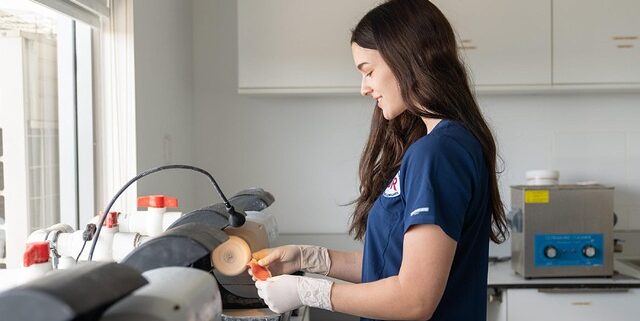Comparing Dental Implants vs. Bridges: Which Option Is Best for Texans?
When one or more teeth are missing, patients in Texas often face a choice: dental implants or bridges. Both options restore appearance and function, but they differ in longevity, cost, and impact on oral health. This article compares the two treatments so patients can make informed decisions with their dentist.
What Are Dental Implants?
A dental implant is a titanium post placed into the jawbone to replace a tooth root. Once healed, it supports a crown, bridge, or denture. Implants mimic natural teeth in both look and function, and they are known for their durability.
What Are Dental Bridges?
A dental bridge fills the gap left by missing teeth by anchoring artificial teeth to surrounding natural teeth. Bridges can be fixed or removable, depending on the patient’s needs and dentist’s recommendations.
Comparing Implants and Bridges
| Feature | Dental Implants | Dental Bridges |
| Longevity | 20+ years, often lifelong | 10–15 years |
| Cost (Texas avg.) | $3,000 – $4,500 per tooth | $2,500 – $3,500 per bridge |
| Procedure complexity | Requires surgery, longer healing | Less invasive, quicker process |
| Impact on nearby teeth | Preserves natural teeth | May require filing down healthy teeth |
| Maintenance | Brush and floss like natural teeth | Special cleaning tools recommended |
This side-by-side view highlights why many Texans consider both the financial and medical aspects when making their decision.
Pros and Cons of Implants
Advantages: Long lifespan, preserve jawbone health, highly stable, natural look and feel.
Disadvantages: Higher initial cost, requires surgery, longer healing process.
Pros and Cons of Bridges
Advantages: Faster treatment, lower upfront cost, effective for multiple missing teeth.
Disadvantages: May weaken surrounding teeth, shorter lifespan, increased maintenance.
Who Should Choose Implants?
Implants are generally recommended for patients with sufficient bone density, good oral hygiene habits, and willingness to invest in a longer process for durable results. Younger adults and middle-aged patients often prefer implants for their longevity.
Who Should Choose Bridges?
Bridges may be better suited for patients who want a quicker, less invasive solution, or for those with budget constraints. They also work well in cases where bone loss prevents immediate implant placement.
Where to Get Advice in Fort Worth
For Texans considering either implants or bridges, consulting with a qualified professional is the best way forward.
Summerbrook Dental & Implants Fort Worth offers both options and provides personalized evaluations.
Summerbrook Dental & Implants Fort Worth
3088 Basswood Blvd #150, Fort Worth, TX 76137, USA
Phone: +18173827445
Final Thoughts
Both dental implants and bridges restore missing teeth effectively, but the best choice depends on individual circumstances. Implants offer superior longevity and bone preservation, while bridges provide faster, more affordable solutions. Texans weighing their options should consider long-term value, health impact, and personal goals. By consulting with a trusted dentist, patients can choose the treatment that best fits their needs and lifestyle.




